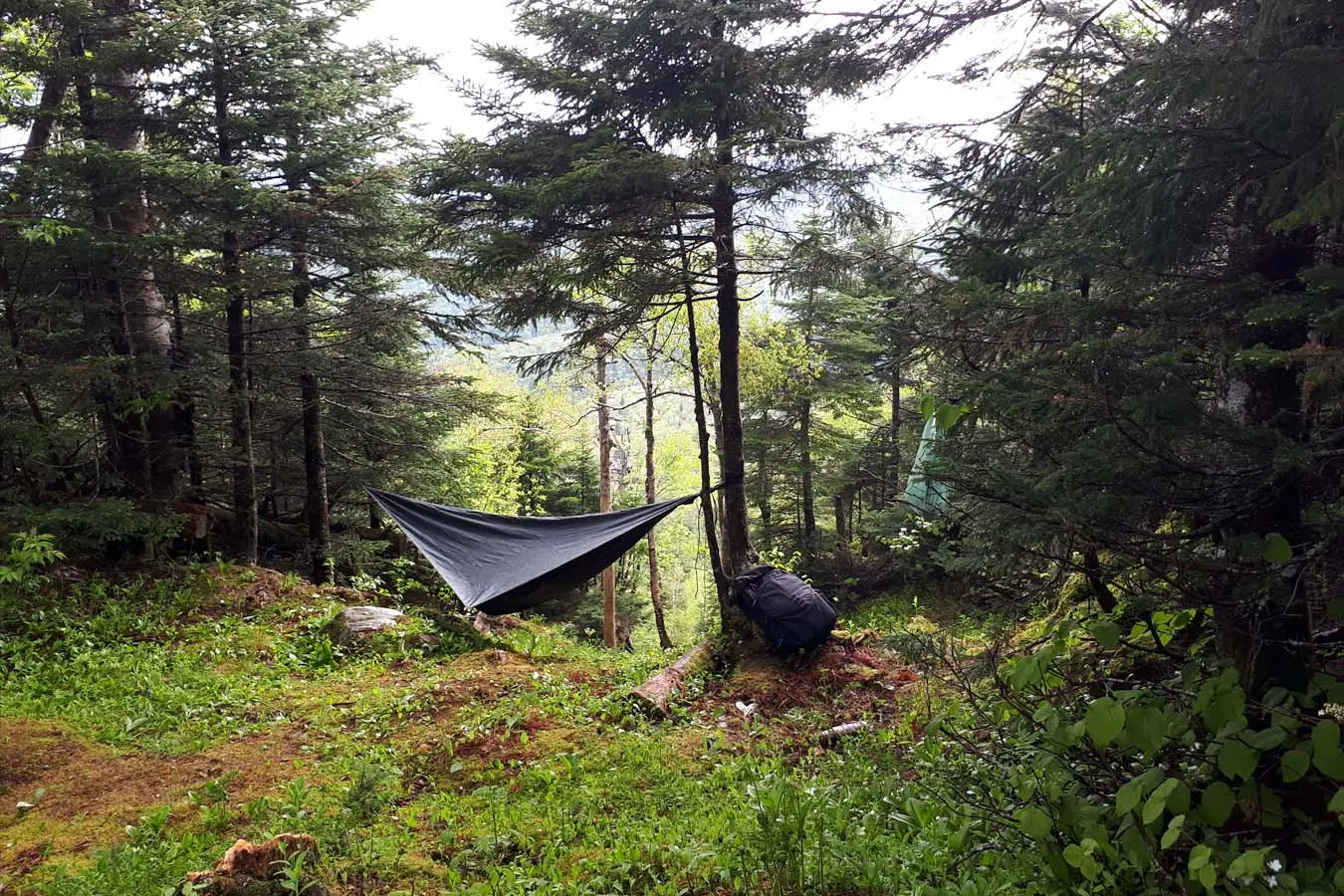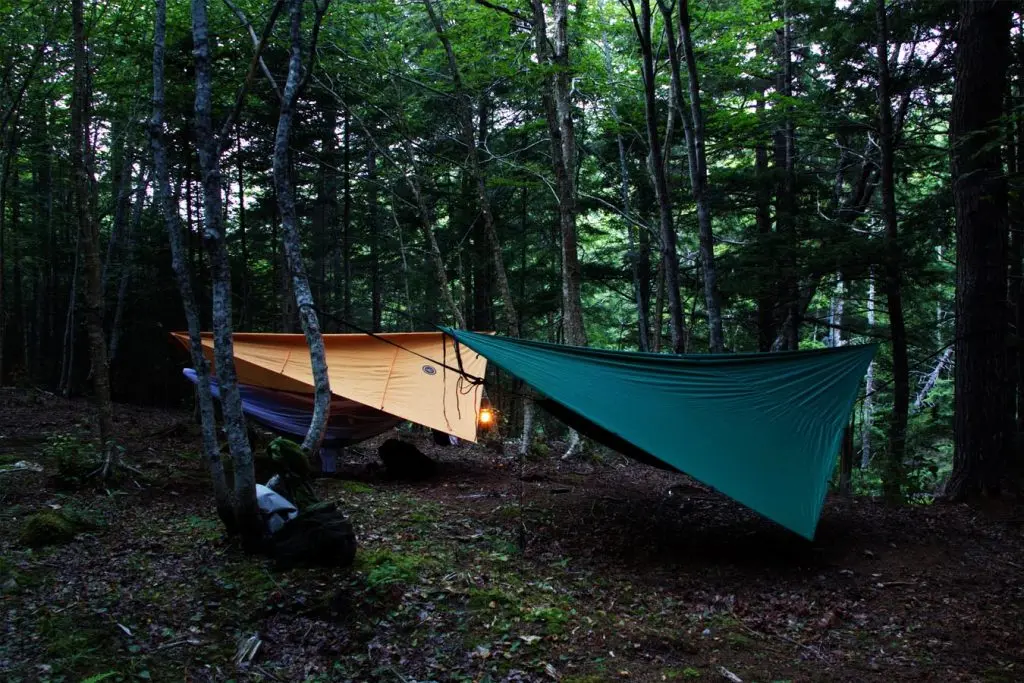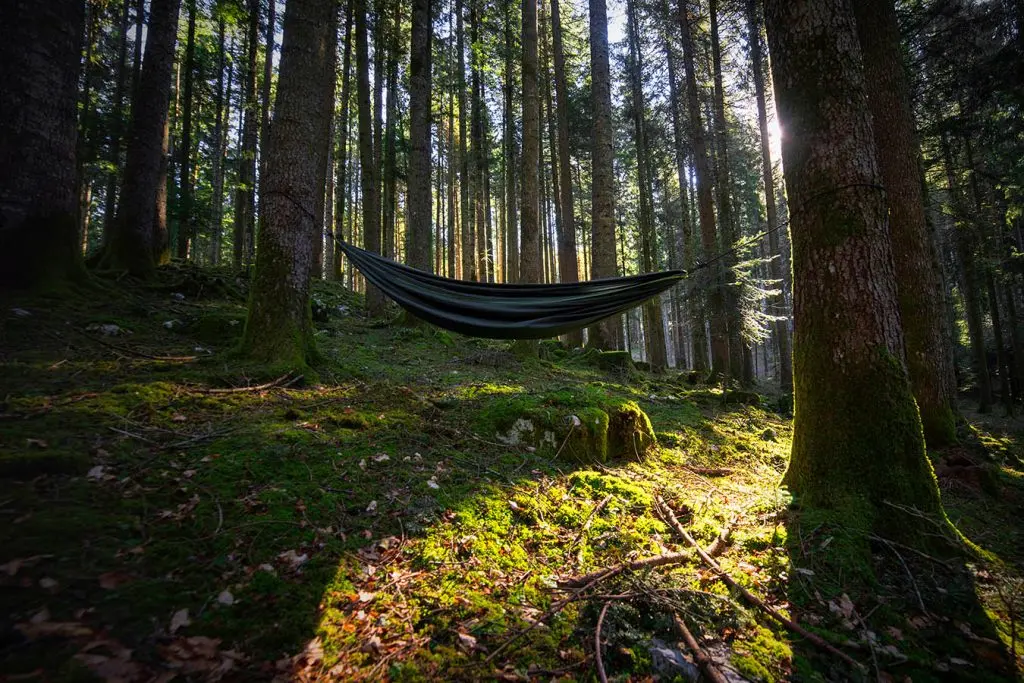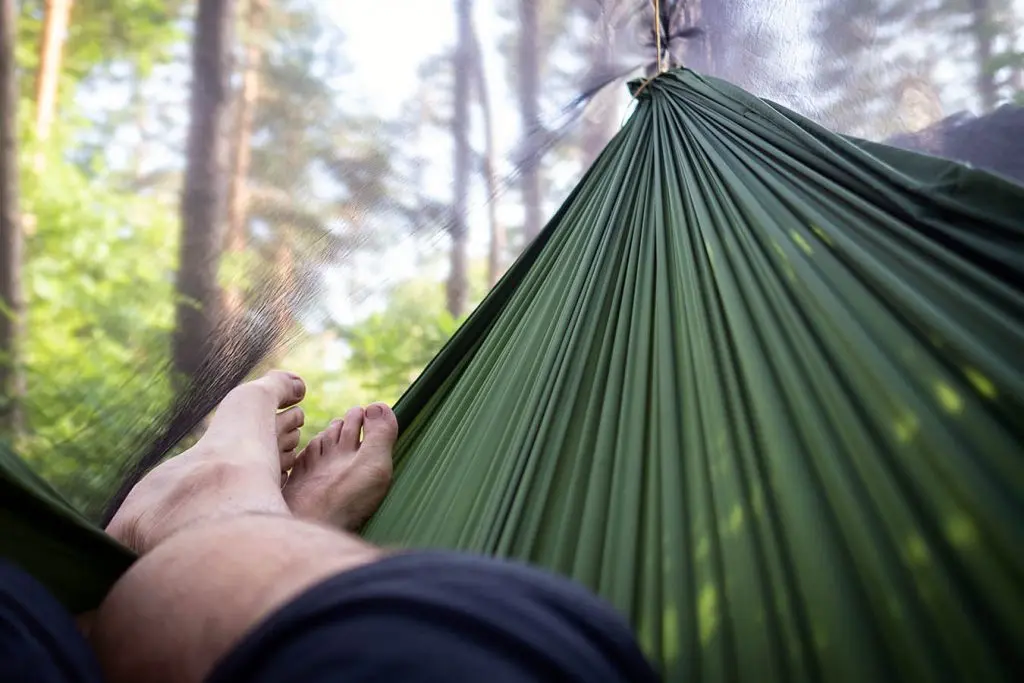Hammock Camping Safety
Everybody knows tent camping is relatively safe, at least it feels that way. You have a roof over your head and stable ground to sleep on, so there’s some resemblance of being inside.
But what about hammock camping? You’re outside, suspended between trees or boulders. You’re exposed to the elements and all types of critters. So is hammock camping safe like tent camping?
Hammock camping is just as safe as tent camping. In fact, some would even argue it’s even safer because you’re not on the ground where dangerous animals can trample. No matter, even though it is safe to hammock camp in general, it’s not without abiding by a few safety rules.
Read more below to learn tried and tested ways to set up and stay safe when hammock camping!
How to Set Up and Stay Safe When Hammock Camping
As with all types of outdoor adventures, staying safe is as much about preparation as it is execution. Mindfulness and safety practices go hand-in-hand. With that said, it’s wise to jot down a hammock camping safety checklist to tick off before you head out for the weekend under the stars.
Here are the main ways to keep safety a priority when hammock camping!
Use high-quality equipment
First and foremost, make sure you’re using durable equipment. No matter how much you plan or prepare, if your hammock gear isn’t high-quality, you run the risk of having accidents. Low-quality camping hammocks can rip, tear, fall, or buckle under your weight.
Having the perfect set up but not the perfect gear and tools is counterproductive. Make sure to invest in quality hammocks and accessories that are suited for the environment you’re heading for. That means equipping yourself for cold temperatures, spotty weather, and rough terrain.
Check your gear before leaving
The next step to ensure your safety for hammock camping is to check your gear before ever setting foot out of the house. What could be a bigger bummer than arriving at your campsite to find out you have a huge hole in your hammock and no way to fix it?
Not only is checking your gear one last time before leaving a good idea in case something is faulty, but it’s also helpful in case you’ve forgotten an important piece of equipment like your tree straps. Thinking you’ve packed something only to realize later on you forgot it is a painful mistake that’s easy to avoid if you just take time to check your bag twice!
Choose a safe location to hang your hammock
When it comes to hammock camping, there’s a few obvious ways to ensure your safety. Choosing a safe location above all is one of them. But how do you know what constitutes a safe location? For one, safe locations are well-known and trafficked campsites. You can never go wrong there.
However, hanging your hammock on unauthorized land, off trails, over rocky terrain or cliffs, or anywhere that could pose a risk to your life or that of others, is considered unsafe.
To stay safe when hammock camping, follow the Leave No Trace principles. Doing so not only ensures your safety while exploring the outdoors, but serves to protect the natural environment and its diverse and fragile flora and fauna.
Pick a good hammock height
It’s never a good idea to suspend your hammock too high or over hazardous ground. The chances of falling while in your hammock isn’t likely, but it’s definitely a possibility.
No matter if you’re a novice or a pro camper, you’re not invincible to falling out of a hammock.
Plus, there’s all sorts of things that could happen that would put your life in danger if you were to hang your hammock at an unsafe height. Hammock hooks or straps can become loose or undone. The hammock material could tear. Not to mention, you won’t be able to escape quickly if wild animals (i.e. bears) get too curious.
The ideal height for a hammock is about 18 inches off the ground. That means you could hang the hammock hooks and straps about 4-4.5 feet high. As a rule of thumb, the hammock should be low enough so you can sit down comfortably and swing your legs over into it for sleeping.
Use tree straps
Although hammock hooks are sturdy, they are not very environmentally-friendly as they permanently scar the trees. Hammock straps are just as durable, but they’re much easier to set up and adjust (and they’re tree-friendly!).
There’s no doubt about your safety when using tree straps for hammock camping. They’re all-around versatile, flexible, and extremely safe to use.
Insulate
One of the biggest hazards to your safety when hammock camping is the climate and behavioral weather patterns. Many first-time outdoorsmen try hammock camping only to discover how cold the nights can get. Hammock camping can be unbearable if you don’t insulate properly. Not only is it uncomfortable, it’s unsafe!
Temperatures can drop drastically (down below freezing) at night. That’s why it’s essential to bring adequate gear to insulate your hammock. Preventing the cold from seeping up into your hammock is the first step in ensuring your safety (and comfort!).
The best way to insulate your hammock is by using a top quilt and down quilt in your hammock. The latter especially is useful for preventing what they call “ice butt syndrome” — when your underside is exposed to cold air due to heat loss from the compression of your body on the sleeping bag.
Tell someone where you’re going
Getting lost when hammock camping is unlikely, but it does happen more than it needs to. The simple act of telling someone your plans can drastically change your fate.
If you get lost, at least someone will know you’re missing. Otherwise, it could take weeks for someone to figure out your last whereabouts.
Even if it’s a short weekend trip, tipping off someone you know (or even the campsite owner or park ranger) about where you’re going is a great way to maximize your safety when out adventuring or hammock camping.
Avoid a campsite with known or signs of animal activity
With a little bit of foresite comes an added layer of safety. That’s at least the case for checking whether or not a campsite has had previous experience with wild animals.
If a location has a concentration of animal activity, the risk of encountering a dangerous animal is higher.
To stay safe when hammock camping, it’s best to avoid areas where reports of wild animal activity are frequent.
P.S. If you should spot a wild animal close to campsite quarters, make sure to let someone in charge know.
Keep food off the ground
One of the ways to ward off animals, or at least not entice them to approach you, is to keep all your food items off the ground.
Actually, the best safety practice for food and hammock camping is to suspend your food just like your hammock – up off the ground, hanging from a far-away tree (at least 100 feet away).
Of course, this solution doesn’t deter bears, who can nimbly climb trees. When hammock camping in bear country, make sure to use approved bear boxes or canisters. Many national parks will require this, but if you don’t know of any at your camping destination, you should consider taking one with you just in case.
So is hammock camping safe?
In summary, it is definitely safe to hammock camp as long as you follow a few basic safety guidelines and rules. The best way to stay safe is to be mindful of yourself and your surroundings at all times.
Practicing good judgment, doing routine check-ups on your gear and set up, plus checking for animal activity, are all additional ways to ensure your safety when hammock camping.
If you do that, you’ll be able to minimize risk and maximize fun.
Stay safe out there and happy camping!
Related guides
How To Find The Best Hammock Underquilt
How To Find The Right Portable Hammock Camping Stand




